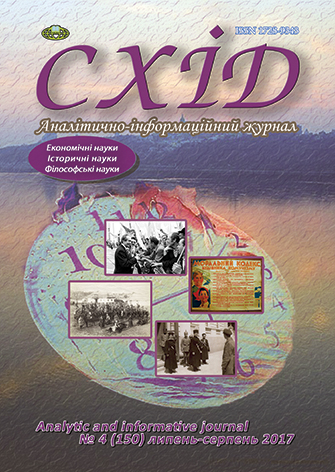Identification of chemical and explosive goods whiletransferring through customs border: global threats and challenges for countries
DOI:
https://doi.org/10.21847/1728-9343.2017.4(150).111194Keywords:
customs security, World Customs Organization, customs risks, illegal transferring of goods, Global Shield program, homemade explosive devices, chemical precursorsAbstract
The article substantiates the dangers of illegal chemical and explosive goods transferring between countries. The threats arising from the use of chemical precursors for the production of homemade explosive weapons, including terrorist organizations, have been argued. The role of the World Customs Organization in counteracting the illegal transferring of chemical precursors across the border is analyzed. The features of the Global Shield program are revealed in counteracting the risks of customs space while transferring chemical precursors. The problems that exist when moving chemical precursors across the customs border of Ukraine are determined.
Downloads
References
Berezhnyuk, I. G., etc. (2014), Risk management in customs: foreign experience and domestic practice, State Research Institute of Customs Affairs; Melnyk A.A. Publisher, Khmelnitsky, 287 p. (ukr).
Kalinichenko, A. I. (2015), Customs safety as a component of national security of Ukraine, Pravo ta innovatsii, № 2; 14-18 (ukr).
Krysovata, K.V. (2012), The world experience in managing financial risks and the possibility of its implementation in the customs territoryof Ukraine, Economic Journal - XXI. No. 11-12, p. 58-61 (ukr).
Martyniuk, V.P. (2010), Customs system and economic security of the state: theory and methodology, Aston Publishing, Ternopil, 256 p. (ukr).
Novikova, K. I. (2012), Globalization Challenges to the Customs Security of the State, Bulletin of the Zaporizhzhya National University, No. 4 (16), pp. 174-180 (ukr).
Pashko, P.V. & Berezhnyuk, I.G. & Hrebelnyk, O.P. and others (2012), Customs policy and customs security: conceptual definition and ways of securing, Znannia, Kyiv, 215 p. (ukr).
Explosive truths: Monitoring explosive violence in 2016, available at: https://aoav.org.uk/2017/explosive-truths-monitoring-explosive-violence-2016/
Illicit Trade Report 2015. WCO, available at: https://illicittrade.com/reports/downloads/OMD_ITR_Complete_LR_2016 _12_04.pdf
Tracing the supply of components used in Islamic State IEDs. Published online by Conflict Armament Research,London, 2016, available at: http://www.conflictarm.com/wp-content/uploads/2016/02/Tracing_The_Supply_of_Components_Used _in_Islamic_State_IEDs.pdf
Dangerous Goods, available at: http://www.unece.org/trans/danger/danger.html
The Globally Harmonized System of Classification and Labelling of Chemicals (GHS), available at: https://www.unece.org/fileadmin/DAM/trans/.../ghs/ghs.../ST-SG-AC10-30-Rev4e.pdf
Dangerous goods list and limited quantities exceptions, available at: https://www.unece.org/fileadmin/DAM/trans/danger/publi/unrec/.../03E_Part3.pdf
CAS Registry and CAS Registry Number FAQs, available at: https://www.cas.org/content/chemical-substances/faqs
Customs officers from all over Ukraine took part in the Global Shield (Global Shield) workshop of the World Customs Organization aimed at combating the illegal movement of so-called «chemical precursors», available at: http://sfs.gov.ua/pro-sfs-ukraini/struktura-/aparat/departament-organizatsii-mitnogo-kont/povidomlennya/252067.html
Downloads
Published
How to Cite
Issue
Section
License
Copyright (c) 2017 Andriy Voyotseshchyk

This work is licensed under a Creative Commons Attribution-NonCommercial-NoDerivatives 4.0 International License.
1. Authors bear responsibility for the accuracy of facts, quotations, numbers and names used.
2. Manuscripts are not sent back.
3. The publisher does not always agree with the authors' opinion.
4. The authors reserve the right to authorship of the work and pass the first publication right of this work to the journal under the terms of a Creative Commons Attribution-NonCommercial-NoDerivatives 4.0 International License. This license allows others to distribute (copy) the published work for non-commercial purposes, provided there is mandatory attribution to its authors and a link to the first publication in our journal.
5. The authors have the right to conclude separate supplement agreements that relate to non-exclusive work distribution in the form in which it has been published by the journal (for example, to upload the work to the online storage of the journal or publish it as part of a monograph), provided that the reference to the first publication of the work in this journal is included.

